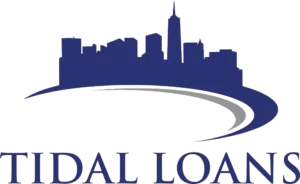Ever wondered how to get a mortgage? It might seem tough, but it’s doable with the right help. You’ll need to know about your financial needs and the steps to apply for a loan. It’s key to understand the mortgage process well.
First, save money for down payments and closing costs. Also, make sure your credit score meets lender standards. Did you know lenders have different credit score needs? For example, New American Funding starts at 500, while Rocket Mortgage needs at least 580.
Choosing the right mortgage and knowing important terms are crucial. You’ll also need to prepare the right documents. Knowing these steps can make getting a mortgage easier, even with changing interest rates.
Key Takeaways
- Understand different types of mortgage loans, including fixed-rate, adjustable-rate, and government-backed options.
- Prepare your finances by saving for down payments and reviewing your credit score.
- Gather necessary documentation ahead of time to expedite the mortgage application process.
- Consider shopping around with various lenders to find the best mortgage loan terms.
- Pre-approval is essential before starting your home search.
- Aim for a credit score that meets or exceeds the minimum requirement of your chosen lender.
- Estimate your affordable house price using mortgage calculators and the 28/36 rule.
Preparing Your Finances for a Mortgage
Before you start the mortgage process, make sure your finances are ready. We’ll cover the important steps to get your finances in order. This includes checking your credit score, saving for down payments and closing costs, and keeping a steady income.
Review Your Credit Score
Your credit score is key for getting a mortgage. A score of 661 or higher means you’re good to go, according to Freddie Mac. Scores between 600 and 660 are almost there. But, if your score is below 599, you need to work on it.
Check your credit report for mistakes, late payments, and collections. Make sure there are no bankruptcies or foreclosures on your report for at least seven years. Tools like Experian and IdentityForce® can help you keep an eye on your credit.
Start Saving for a Down Payment and Closing Costs
Saving for down payments and closing costs is crucial. The median down payment is $60,202, but it can vary. VA loans don’t require a down payment, while conventional loans might ask for up to 20%.
Special programs like the DreaMaker loan need only a 3% down payment. Closing costs usually range from 2% to 5% of the loan amount. It’s also smart to save 3 to 6 months’ worth of living expenses for emergencies.
Use high-yield savings accounts to grow your savings. Goldman Sachs Bank USA and Ally Bank offer great rates. This way, you can save more efficiently.
Maintain Consistent Income
Having a steady income is important before applying for a mortgage. Lenders like to see stable employment and regular income. Avoid big purchases, taking on debt, or opening new credit lines.
Keep your debt-to-income ratio low. Your front-end DTI should be under 25%, and your back-end DTI should be no higher than 36%. This shows you can handle a mortgage.
By following these financial steps, you’ll be ready for a good mortgage. This will help you get closer to owning your dream home.
Determining Your Affordable House Price
Figuring out how much you can spend on a house involves several factors. These include your monthly income and potential expenses. Let’s explore the key considerations.
Using a Mortgage Calculator
A home affordability calculator is a great tool to find a house price you can afford. Just enter your income, debts, and down payment. It will show your budget and mortgage payments.
Remember, your mortgage rate affects your monthly payments. Lower rates mean cheaper payments. Lenders look at your income, down payment, and credit score to decide if you qualify for a loan.
Following the 28/36 Rule
The 28/36 rule is a useful guide for your housing budget. It says you shouldn’t spend more than 28% of your income on housing costs. This includes mortgage, property taxes, and insurance. Also, your total debt should not be more than 36% of your monthly income.
Accounting for Additional Costs
There are extra costs to consider when buying a home. These include:
- Private mortgage insurance (PMI): If your down payment is less than 20%, PMI can add about 1% of the loan amount annually.
- Emergency fund: Experts say to save at least three months of mortgage payments.
- Maintenance: It’s wise to budget 1% to 4% of your home’s value each year for repairs and upkeep.
- Closing costs: These usually range from 2% to 5% of the home’s purchase price.
Using a home affordability calculator and following the 28/36 rule helps you understand a fair house price. This ensures you can handle housing costs without stretching your finances too thin.
Understanding Different Mortgage Types
Exploring mortgage options is key to finding the right fit for your finances and goals. There are several types, including fixed-rate, adjustable-rate, government-backed, and private mortgages. Let’s dive into each category.
Fixed-Rate vs. Adjustable-Rate Mortgages
Fixed-rate and adjustable-rate mortgages are the main choices. Fixed-rate mortgages have the same interest rate and monthly payment for the loan term, usually 15, 20, or 30 years. They’re great for those who plan to stay in their home long-term.
On the other hand, adjustable-rate mortgages (ARMs) start with a lower rate but can change over time. They might be a good option if you think you’ll move or refinance soon. However, they carry the risk of higher payments if rates go up.
Government-Backed Mortgages
Government-backed mortgages help certain groups or those with special needs. These include:
- FHA Loans: These require a lower down payment and are for those with lower credit scores. You can put down as little as 3.5%.
- VA Loans: For current and former military members, these loans often have no down payment and no private mortgage insurance.
- USDA Loans: These are for low- to moderate-income borrowers in rural areas. They often require no down payment and have favorable terms.
Private Mortgages
Private lenders also offer conventional mortgage products. Conventional loans are the most common, needing a credit score of 620 and a down payment of at least 3%. Jumbo loans are for high-value homes, requiring a score of 700 and down payments from 10% to 20%.
It’s important to know about nonqualified mortgages too. They might have unique terms but often have higher rates and risks.
Choosing the right mortgage depends on your credit score, down payment, loan amount, and how long you’ll stay in your home. Understanding each type’s pros and cons helps you find the best loan for you. Whether it’s a fixed rate for stability or an ARM for savings, the right choice can lead to better rates and a secure financial future.
How to Get a Mortgage Pre-Approval
Getting a mortgage preapproval is key when buying a home. It shows sellers you’re serious and helps you know how much you can borrow. Let’s look at how to get preapproved easily.
Choosing the Right Lender
First, pick a lender that meets your needs. Look at their loan options, rates, and what others say about them. Some lenders offer special programs like down payment help and VA loans.
It’s smart to talk to several lenders in 45 days. This way, you can find the best rates and fees without hurting your credit score. NerdWallet is a great place to start, as it rates lenders based on important factors.
Gathering Required Documentation
To start your loan application, you need some important documents. You’ll need W-2s, tax returns, pay stubs, and bank statements. Lenders want to see two years of steady work unless you’re self-employed, then it’s two years of tax returns.
Having all your documents ready is key for a smooth process. It can take anywhere from an hour to 10 business days to get preapproved, depending on what’s needed.
Understanding Pre-Approval vs. Prequalification
It’s important to know the difference between preapproval and prequalification. Preapproval means a lender checks your financial info and does a credit check. Prequalification is just a basic check.
Preapproval is better because it shows you’re serious and ready to buy. It usually lasts three months or less. So, be ready to buy quickly when you’re preapproved.
Getting preapproved helps you stand out in the real estate market. By knowing your finances, getting your documents ready, and choosing the right lender, you’re more likely to buy a home. For more on buying a home, check out the Tidal Loans guide to homeownership.
Navigating the Mortgage Application Process
Getting a mortgage involves several steps. First, you choose a lender and fill out an application. You’ll need to provide financial documents to show you can afford the loan. The lender will check your credit and documents to decide if you qualify.
The underwriting process is when the lender looks at your financial info and credit history. They also order a home appraisal to check the property’s value. It’s important to answer any questions or requests quickly to keep things moving.
The closing process for a home usually takes 30 to 45 days. But, it can vary based on the mortgage type and your situation. On closing day, you’ll sign the final papers. This ensures the loan terms match what you were told earlier.
The loan estimate comes within three business days of applying. It’s good for 10 business days. By the time you’re approved, your interest rate will be set. To speed things up, keep your finances in order. Be ready to pay earnest money and closing costs, which are usually 2% to 5% of the home’s price.
Knowing these steps helps you understand the mortgage journey better. Remember, the whole process can take up to 90 days or more for complex cases. But, staying proactive and talking clearly with your lender can make it easier.
Conclusion
The mortgage journey might seem tough, but it’s achievable with the right steps. Start by checking your credit score, aiming for at least 620. Also, save for down payments and closing costs, which can be 2% to 6% of the loan amount.
Keep your debt-to-income ratio low, below 43% and ideally under 36%. This helps you find a house price you can afford. Use a mortgage calculator and follow the 28/36 rule to plan your budget.
It’s key to know the different mortgage types. Fixed-rate, adjustable-rate, government-backed, and private mortgages each have their own perks and rules. For example, FHA loans need a 3.5% down payment, while VA and USDA loans might not require any down payment.
Getting a mortgage pre-approval means choosing the right lender and gathering needed documents. It’s important to understand the difference between pre-approval and prequalification. The mortgage application process checks your credit, job, income, assets, and debts, taking about one to three days.
Getting a mortgage is a big step toward owning a home. Stay informed and seek help when needed. For expert help, contact Tidal Loans LLC at 832-757-1262 or info@www.tidalloans.com. With the right planning, your dream home is closer than you think.


